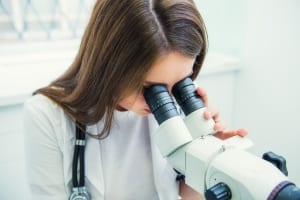Herzliya Medical Center
Tel: +972-9-959-4888
09:00-18:00
 Colposcopy is an examination that is intended to closely assess three regions: the vulva, the vagina, and the cervix. The examination allows various findings in these regions to be carefully assessed and to understand if they are pre-cancerous or cancerous. If this indeed turns out to be the case, it must be treated promptly.
Colposcopy is an examination that is intended to closely assess three regions: the vulva, the vagina, and the cervix. The examination allows various findings in these regions to be carefully assessed and to understand if they are pre-cancerous or cancerous. If this indeed turns out to be the case, it must be treated promptly.
Colposcopy will usually be performed following previous examinations performed in this region (PAP smear for example) that raised suspicious findings. These findings may be very initial, and able to be effectively treated – but in order to be able to treat them, it is necessary to first know their size, their nature and the extent to which they are dangerous.
In the examination, the physician closely assesses the vagina, the cervix, and the vulva, using a special microscope, a colposcope, which provides up to 60 times magnification of the place being examined. The physician can usually obtain a more accurate picture regarding findings that were identified in previous examinations, and to clearly understand what it is. During the examination, a tissue specimen can also be taken (called a biopsy), which will be sent for laboratory testing.
Colposcopy is a very accurate examination, allowing the physician a very large range of magnifications of the location that is being examined – between two times and 60 times larger than actual size. This range, allowing any point under examination to be magnified so significantly, provides the physician with superb means for assessment of various findings and for especially accurate diagnosis.
In order to make the examination even more accurate, the physician uses various substances that ‘mark’ these findings and emphasize them (usually acetic acid, sometimes also iodine solution), which clearly displays their type, shape, and borders.
Here it is important to note: not every suspicious finding discovered in previous examinations is in fact cancerous. There are many cases that turn out to have been a ‘false alarm’, and other cases in which the findings exist, but are harmless. In all events, if pre-cancerous or malignant findings are indeed discovered, the early stage at which they are discovered ensures a higher probability of cure.
The examination is performed under local anesthesia only in most cases, and it, therefore, does not require special prior preparation. However, it will be performed only after the completion of menstrual bleeding. Also, in the case of vaginal infection or inflammation, the examination will be performed only after the completion of medicinal treatment.
There is some preparation that will be performed in the days preceding the examination, when you will be asked to provide the physician with a full picture of your health status – including the date that you got your last menstrual period, the number of pregnancies that you have had, etc.
Colposcopy is performed in the same manner as a routine gynecological examination: you will be asked to lie on your back with your legs separated. Initially, an anesthetic will be administered, after which the vagina will be opened and rinsed with substances that will emphasize the various findings.
Then the physician will commence the actual examination. He will observe the vulva, vagina, and cervix using the colposcope, will assess any suspicious finding, and magnify the image as needed to optimally assess its characteristics. Subject to various considerations, the physician will be able to perform a biopsy on the same occasion and send the tissue specimen taken for laboratory testing.
In accordance with the various findings obtained during the colposcopy, the physician will decide regarding the next steps.
The examination takes about a quarter of an hour at the most. You should not experience pain during the examination, but you may experience some level of discomfort. If a biopsy is taken, you should avoid sexual intercourse and the use of tampons for a week from the date of the examination. Sports activities are forbidden for one day.
During the first ten days after the colposcopy, bleeding may occur, mainly if a tissue specimen was taken at some stage during the examination. Pain that resembles period pain is also common in the hours following the examination, and it should pass by itself. More significant side effects are vaginal bleeding, contractions or pain that does not stop, and vaginal discharge with a bad odor. These side effects are possible, but quite rare. It is recommended to consult with your physician if they occur.